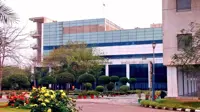Brazil unveils plan to save the Amazon
02 Dec 2008
The Brazilian government has announced plans for the first time, to cut deforestation of the Amazon rain forest by 70 per cent over the next decade to reduce the damage caused by widespread illegal logging and thereby reduce global warming.
Brazil, which had up to now refused global pleas to adopt targets in saving the Amazon rain forest from destruction, has for the first time said it would plan to reduce clearing of the rain forest to 2,260 square miles a year by 2018.
Satellite imagery shows a very bleak picture for the planet as nearly 4,633 square miles of the Amazon rain forest being cleared in the year to July and this figure is up by nearly 4 per cent compared to last year.
High energy prices are being blamed for the deforestation, which has seen the first increase of deforestation since 2004, when about 10,000 square miles disappeared.
The Amazon rainforest has often been described as the "Lungs of our Planet" because it continuously recycles carbon dioxide into oxygen. More than 20 per cent of the world oxygen is produced in the Amazon rainforest.
"This plan improves Brazil's image, we'll have more moral authority internationally," environment minister Carlos Minc told reporters after unveiling this plan in the presence of President Luiz Inacio Lula da Silva.
"Just in terms of avoided deforestation in the Amazon, the plan foresees a reduction of 4.8 billion tons of carbon dioxide that won't be emitted up to 2018, which is more than the reduction efforts fixed by all the rich countries," Minc said.
"We will surely receive criticism, but we can say that we are presenting a better one (plan) than China or India, and better than others that still haven't signed the Kyoto Protocol," Lula said.
This announcement was made as the United Nations climate conference in Poznan, Poland is under way to reduce carbon emissions.
The minister said Brazil hopes to use the plan to "increase the number of contributors to the Amazon Fund" launched last August which aims to collect money from around the world to fight deforestation.
Norway has pledged $1 billion to the Amazon Fund over seven years and Brazil hopes that rich countries should not hesitate to transfer new technologies to help it reaching its desired target.
In recent years, the Brazilian government came down heavily on illegal logging through a force made up of police and environmental inspectors known as "Arc of Fire.''
This force increased policing, seized farm products cultivated on cleared forest land and cut the source of funds for unregistered properties and Carlos Minc, said that without actions like this, the figures on deforestation could have been much higher.
Environmental groups however were not too happy as they say that the change in the government's attitude is too little too late but nevertheless admitted that it marked a change in the global fight against climate change and wanted the goal of the government to be more ambitious.
Some interesting facts of the Amazon rain forest:
The earth's land surface was once covered by 14 per cent of rain forest while now it covers only 6 per cent and experts estimate that even this meager 6 per cent could be wiped out in less than 40 years.
The reason for the wholesale destruction of rain forest is the greed by governments, multinational logging companies, and land owners who look at the rain forest as a source of profit by selling timber and farming for even renowned companies like Texaco, Mitsubishi Corporation, Unocal and Georgia Pacific.
The Amazon rainforest is spread over seven million square kilometers (1.7 billion acres) and covers countries in Brazil, Venezuela, Colombia and the Eastern Andean region of Ecuador, Peru, Guyana, Suriname, and French Guiana.
The Amazon represents over half of the planet's remaining rainforests, and it holds the largest and most species-rich tract of tropical rainforest in the world.
The Amazon rain forest has been in existence for at least 55 million years and out of the estimated 10 million Indians living in the Amazon rain forest five centuries back, only 2,00,000 exists today.
Since the 1900's, European colonists have destroyed more than 90 indigenous tribes of the Amazon in Brazil alone and destroying centuries of knowledge of the medicinal value of rainforest species.
Most medicine men left in the Amazon today are above the age of 70 and as each one dies he takes with the immense wealth of knowledge on medicinal plants without the world learning about it.
One fifth of the world's fresh water lies in the Amazon basin and more than half of the world's estimated 10 million species of plants, animals and insects live in the tropical rainforests.
Currently, 121 prescription drugs currently sold worldwide come from the plants of the Amazon and less than 1 per cent of these trees and plants have been tested for its medicinal value although 25 per cent of the drugs come from the Amazon plant-derived sources.
In 1983, no US pharmaceutical companies were involved in research programs to discover new drugs or cures from plants while today, over 100 pharma companies including giants like Merck and The National Cancer Institute, are engaged in research projects for possible drugs and cures for viruses, infections, cancer, and even AIDS from plants and tropical trees of the Amazon rain forest.



.webp)





























